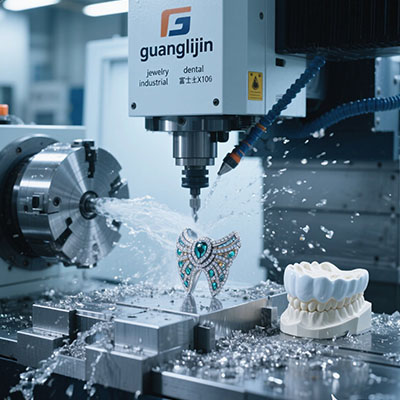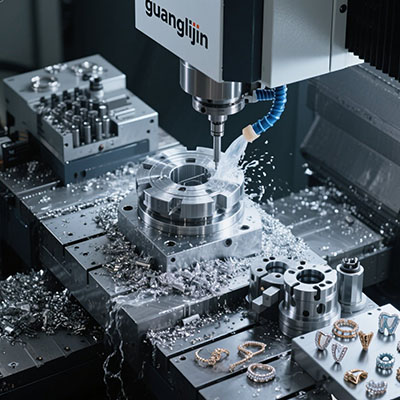Precision 5 Axis CNC Parts: Revolutionizing Aerospace Manufacturing
Why Aerospace Demands Beyond Standard Machining
Aircraft components face extreme stress and thermal cycles. Traditional 3-axis machining struggles with complex contours. This limitation often requires multiple setups. Each setup introduces potential errors. Such errors are unacceptable in aerospace.
Therefore, the industry shifted to advanced solutions. 5-axis CNC technology emerged as the answer. It allows continuous tool engagement from nearly any direction. This capability is crucial for manufacturing reliable 5 axis cnc parts.
How 5-Axis Machining Solves Complex Challenges
This technology uses three linear axes (X, Y, Z) and two rotational axes (A and C). The simultaneous movement creates incredible flexibility. Imagine machining a turbine blade in a single setup. That is exactly what it enables.
Lead times shrink dramatically. A study by SME.org in 2023 showed a 70% reduction in setup time for complex parts. This efficiency boost is a game-changer for production schedules.
Surface finish quality also improves. The tool maintains an optimal orientation to the workpiece. This reduces secondary operations like hand polishing. It also ensures superior aerodynamic properties.
Real-World Application: A Turbine Blade Case Study
Our team encountered a challenge in 2025 with a client’s turbine blade prototype. The part had twisted aerofoils and thin walls. Using 3-axis machining was proving costly and inaccurate.
We switched to a 5-axis strategy. The result was phenomenal. We achieved the required ±0.025mm tolerance consistently. The single-setup process eliminated cumulative errors. This success solidified our faith in this technology.
5-Axis vs. 3-Axis: A Clear Comparison
Is 5-axis always the better choice? Not necessarily. The decision depends on the project’s complexity. Let’s compare two typical scenarios.
| Factor | Project A: Bracket | Project B: Impeller |
|---|---|---|
| Part Geometry | Primarily planar faces | Complex, organic 3D contours |
| Recommended Process | 3-Axis Milling | 5-Axis Simultaneous Machining |
| Tolerance Achieved | ±0.05 mm | ±0.025 mm |
| Number of Setups | 3 | 1 |
| Total Machining Time | 4 hours | 5.5 hours |
As shown, 3-axis is efficient for simpler parts. However, 5-axis is indispensable for complex geometries like impellers and blisks. It ensures higher accuracy for critical 5 axis cnc parts.
A Step-by-Step Guide to Implementing 5-Axis Machining
Adopting this technology requires a structured approach. Rushing leads to costly mistakes. Follow these five key steps.
- Feasibility Analysis: Digitally review the 3D model. Identify undercuts and deep cavities that require tilt.
- CAM Programming: Develop toolpaths using advanced CAM software. Focus on collision avoidance and smooth axis movements.
- Workholding Design: Select or custom-design fixtures. They must provide rigid support without interfering with the tool’s range of motion.
- Dry Run Simulation: Virtually run the entire program. This catches errors before any metal is cut, saving material and time.
- Precision Machining & Inspection: Execute the program on the machine. Use CMMs to verify critical dimensions against the CAD model.
Optimizing for Superior Results
Success goes beyond just having the machine. Tool selection is critical. For example, using a ball nose end mill is standard for 3D surfaces. However, feed rate optimization is what separates good parts from great ones.
According to a Sandvik Coromant report, proper toolpath strategies can increase metal removal rates by over 30%. That is a significant productivity gain.
Interestingly, sometimes running the machine slower yields a faster overall outcome. How? By eliminating vibrations that cause poor finish and require rework. It is a counter-intuitive but vital insight.
Your Pre-Production Checklist
Before you start the spindle, run through this list.
- CAD model is final and error-free
- CAM simulation shows zero collisions
- Workholding is secure and cleared for full axis travel
- Tool library is updated with correct lengths and diameters
- First-article inspection plan is ready at the machine
Frequently Asked Questions
What are the main benefits of 5 axis machining for aerospace components?
It allows for complex part geometry in one setup, ensures high accuracy for tight tolerance parts, and improves surface finish on contoured surfaces.
How to choose a supplier for high precision 5 axis cnc parts?
Look for NADCAP or AS9100 certification, check their portfolio for complex parts, and ask about their in-house inspection capabilities like CMM.
What is the typical lead time for custom 5 axis machined parts?
Lead times vary, but for prototype quantities, expect 2-4 weeks. Production volumes require longer, depending on part complexity and material availability.
Can 5-axis CNC machines create parts from titanium for aerospace?
Absolutely. In fact, they are ideal for machining difficult-to-cut aerospace materials like titanium and Inconel, provided they have sufficient torque and rigidity.
What is the difference between 3+2 and continuous 5-axis machining?
3+2 machining locks the two rotational axes in position to perform 3D work, while continuous 5-axis moves all five axes simultaneously for smooth, complex contours.







